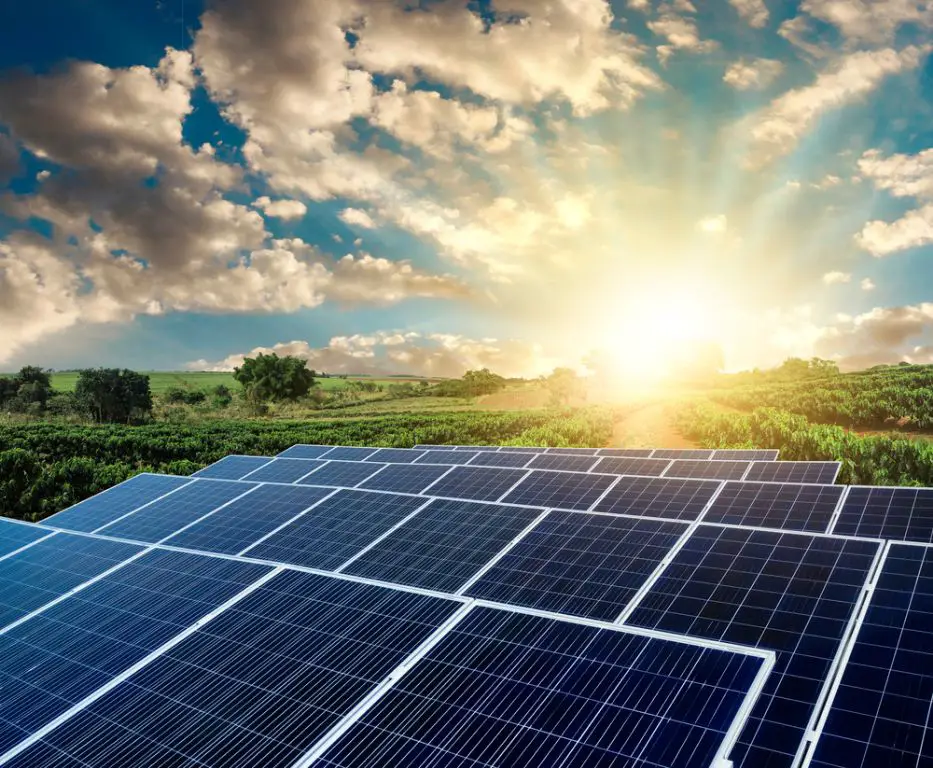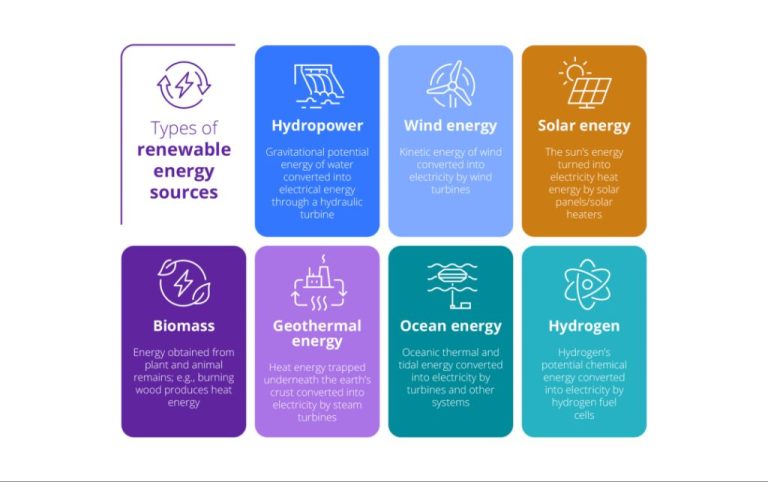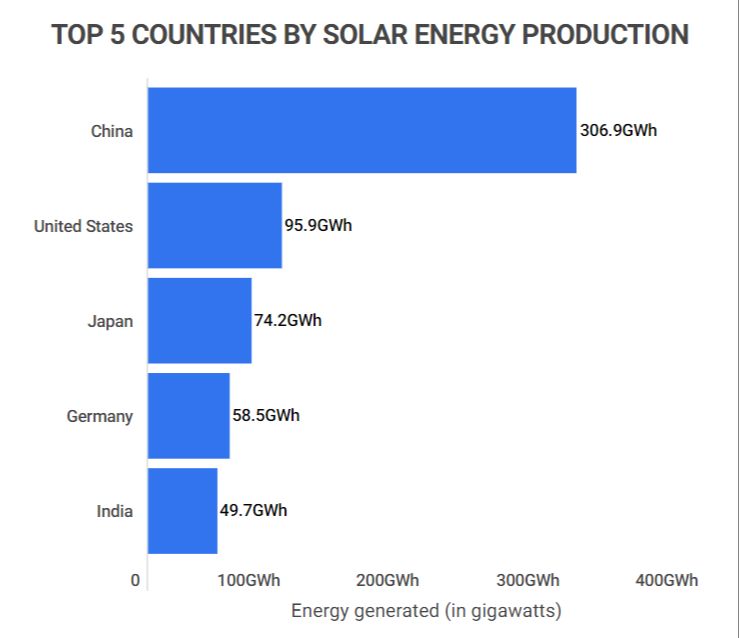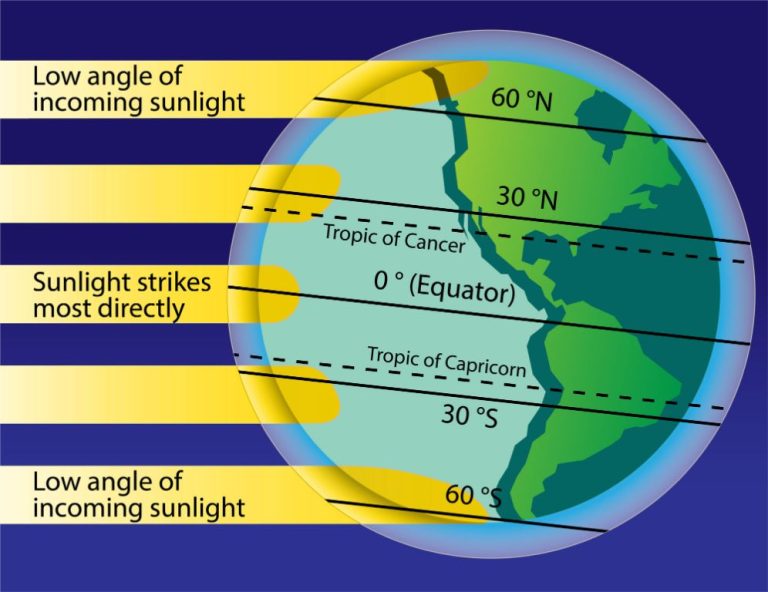What Do You Mean By Renewable And Non-Renewable Resources?
Renewable and non-renewable resources are two broad categories used to classify natural resources based on their rates of replenishment. Renewable resources have the ability to replenish themselves naturally over time, while non-renewable resources exist in finite quantities and are depleted much faster than they are formed.
Understanding the key differences between renewable and non-renewable resources is crucial for building a sustainable future. The rate at which we consume non-renewable resources like oil and coal is not sustainable in the long run. And renewable resources like wind and solar can play a big role in meeting our energy needs through clean, infinite sources. This overview will explore the characteristics of both types of resources to provide a basis for more informed decision making around natural resource usage and environmental protection.
Definition of Renewable Resources
Renewable resources are sources of energy that can be naturally replenished within a human lifespan. The key aspect of renewable resources is that they are unlimited and can be replenished over time. This sets them apart from non-renewable resources like fossil fuels, which take millions of years to form naturally.
The most common types of renewable resources used for energy production are:
- Solar power – Generated from sunlight using photovoltaic panels.
- Wind power – Captured through large wind turbines.
- Hydropower – Produced by flowing water at dams or wave/tidal energy.
- Geothermal – Harnessed from heat below the earth’s surface.
- Biomass – Obtained from organic materials like plants, wood, or waste.
A key benefit of renewable resources is their sustainability. As long as the sun shines, wind blows, or rivers flow, these sources can produce energy without depletion. This makes them reliable and environmentally friendly options for energy production. Their replenishable nature provides energy security for the long-term.
Definition of Non-Renewable Resources
Non-renewable resources are natural resources that exist in finite quantities and will eventually run out if consumption continues. Some examples of non-renewable resources include:
- Fossil fuels like coal, oil and natural gas
- Metals like gold, silver, copper and aluminum
- Minerals like diamonds, limestone and gypsum
These resources cannot be easily replenished, renewed or reused once they are extracted and consumed. Fossil fuels, for example, take millions of years to form naturally so we cannot reproduce them quickly. Minerals and metals exist in limited quantities based on geological conditions. While recycling can help extend the life of some non-renewable resources, ultimately the finite supply will dwindle if consumption outpaces availability.
Since non-renewable resources do not self-regenerate, it is important to conserve their use and find alternatives where possible. Over-reliance on them can lead to exhaustion of reserves in the future.
Availability
One of the key differences between renewable and non-renewable resources is their availability. Renewable resources like solar, wind, hydro, and biomass are considered inexhaustible. This is because they are continuously replenished through natural processes and cycles.
The sun will continue to shine, the wind will keep blowing, rivers will flow, and plants will grow. We cannot “run out” of renewable resources even with heavy usage. Renewables are abundant and accessible globally.

On the other hand, non-renewable resources like oil, natural gas, and coal are finite in supply. There is a limited amount available on Earth. Once used up, more cannot be readily created. While estimates vary, some projections indicate that at current usage rates, oil reserves may last around 50 years, natural gas 60 years, and coal 130 years.
Non-renewables are being depleted much faster than new reserves are found. As they become scarcer, costs tend to increase. There is also greater competition and conflict over control and access to remaining supplies concentrated in specific geographic regions.
In summary, renewables are considered inexhaustible while non-renewables are finite. This availability factor significantly shapes their long-term sustainability as energy sources.
Environmental Impact
Renewable energy resources like wind, solar, hydropower, geothermal, and biomass are generally much cleaner for the environment than non-renewable fossil fuels like oil, natural gas, and coal. This is because renewable resources do not produce greenhouse gas emissions or other pollutants when generating electricity. Fossil fuels, on the other hand, release high levels of carbon dioxide and other gases when burned, contributing significantly to climate change and air pollution.
Extracting and producing fossil fuels also takes a major environmental toll through practices like fracking, drilling, and mountaintop removal mining. These disrupt the landscape and can contaminate water sources and ecosystems. The extraction process for renewables like solar and wind is much more benign in comparison.
In addition, renewable energy systems like solar panels and wind turbines can be built almost anywhere, including on buildings and unused land. Fossil fuel power plants and infrastructure tend to take up large amounts of dedicated land and space. Overall, choosing renewable resources over non-renewable ones has immense environmental benefits by reducing emissions, pollution, habitat destruction, and land/resource use.
Cost
In the long-run, renewable energy costs may be lower than non-renewable. But non-renewables currently enjoy economies of scale that make them cheaper in most cases. The upfront capital costs for building renewable power plants and infrastructure tend to be higher currently. However, once built, the ongoing fuel costs are minimal for renewables since sources like sunlight, wind, and geothermal heat are free. In contrast, non-renewables require continual fuel purchases and price fluctuations can impact costs over time.
At scale, renewable energy prices can compete with and even beat non-renewables on cost, but getting to scale requires substantial initial investment. Government subsidies and private investment to grow renewable capacity will help improve economies of scale in the future. But for now, non-renewables generally maintain a cost advantage in most markets.
Reliability
One of the most important factors when comparing renewable and non-renewable energy resources is reliability. Non-renewable resources, like coal, natural gas, and nuclear energy, provide very consistent and reliable power. These resources are available on-demand whenever they are needed. For example, a coal or natural gas power plant can produce a steady supply of electricity day and night, regardless of environmental conditions.
In contrast, many renewable resources are intermittent and weather-dependent. Solar power relies on sunny days, wind power needs windy conditions, and hydropower depends on adequate water supplies. This means renewable energy production can fluctuate based on the time of day, season, or weather patterns. During cloudy or calm days, renewable output may decrease significantly.
The intermittency of renewables can make integrating them into the electric grid challenging. Additional energy storage or backup power supplies may be needed in case renewable resources are not available due to weather conditions. Non-renewable sources do not face this issue and can more reliably meet continuous energy demand.
However, renewable technology and grid management techniques are improving. Solutions like smarter grids, energy storage, and geographical distribution of renewable projects can help compensate for intermittency. The reliability of renewable power will increase as these solutions are further implemented.
Future Outlook
Renewable energy sources are projected to continue growing their share of overall energy generation as costs fall and technology improves. Solar and wind power are becoming cost competitive with fossil fuels in more markets, leading to greater adoption. Renewables like solar and wind can provide electricity without any fuel costs or carbon emissions during operation.
However, non-renewable sources like oil, natural gas, and coal will remain important globally to meet energy demand. Many developing nations are still building up their energy infrastructure relying heavily on fossil fuels. And some energy uses like transportation remain heavily dependent on liquid fuels. While alternatives like electric vehicles are growing, traditional internal combustion engines still dominate the auto market in most countries.
Overall, the future is likely to see a mix of both renewables and non-renewables continuing to meet the world’s energy needs. The exact mix will vary by country and market based on policy, costs, and infrastructure. But renewables appear poised for robust growth, even if non-renewables remain significant.
Policy Considerations
Government policies can significantly impact the development and use of renewable versus non-renewable resources. Policymakers must balance energy security, economic growth, and environmental protection when designing energy policy.
For renewable energy sources like solar, wind, and hydropower, governments often provide tax incentives, rebates, and other subsidies to support growth. These policies help make renewable energy more cost-competitive with conventional fuels. Governments may also implement renewable portfolio standards that require utilities to supply a minimum percentage of power from renewables.
However, renewable energy still faces challenges competing with entrenched fossil fuel industries without supportive policies. Government regulations on carbon emissions and pollution have been associated with increased renewable energy deployment. Removing fossil fuel subsidies could also help level the playing field.
On the other hand, policies that protect declining fossil fuel industries, such as coal and oil, may impede the transition to renewable energy. Some governments provide billions in production subsidies for oil, gas, and coal companies. Easing these subsidies could shift investment toward clean energy solutions.
Overall, government policies play a pivotal role in shaping energy systems. Well-designed policies can accelerate renewable energy growth while managing impacts on existing industries reliant on non-renewable resources. Policymakers must weigh these complex tradeoffs to chart a sustainable energy future.
Conclusion
The key difference between non-renewable and renewable resources is that non-renewables like coal, oil, natural gas, and nuclear fuels are finite and will eventually be depleted, while renewables sources like solar, wind, hydropower, and geothermal are constantly replenished. Over the coming decades, a progressively larger share of energy production will likely shift from non-renewables to renewables as technology improves and prices continue to drop. While renewable sources have advantages like lower emissions, less environmental damage, and limitless supply, non-renewable resources currently provide vital base load power and energy density that make them essential for meeting today’s demands. The future will likely see an increased mix of both source types, with a greater focus on conserving non-renewable resources and steadily adopting clean energy to ensure an affordable, reliable, sustainable energy future for all.





